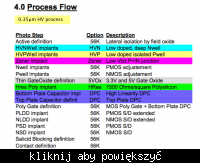iliyana
Newbie level 3

Dual implant
Hi all,
I need some advises from the mosfet expert. I would like to know on the sequence of the energy for the dual implant process. Which one will come first, low energy / high energy? What is the main concern/ effect if the sequence is not correct?
Thanks in advance.
Hi all,
I need some advises from the mosfet expert. I would like to know on the sequence of the energy for the dual implant process. Which one will come first, low energy / high energy? What is the main concern/ effect if the sequence is not correct?
Thanks in advance.



